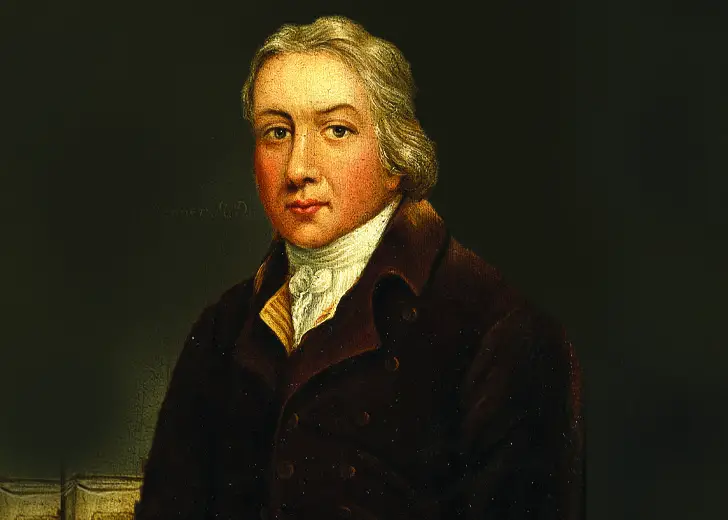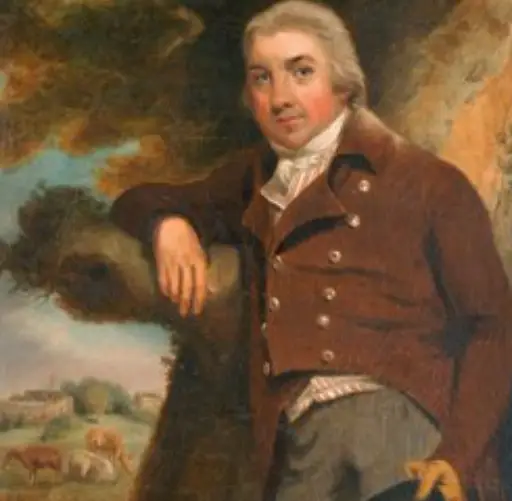
Quick Wiki
- Full Name Edward Jenner
- Birth Date May 17, 1749
- Death Date 1823-01-26
- Place Of Death Berkeley, United Kingdom
- Nationality British
- Birthplace Berkeley, Gloucestershire, England
- Occupation Surgeon & Scientist
Edward Jenner | Biography
Historically Jenner had been fascinated by the fact that an individual could not be infected by smallpox if they had been previously attacked by cowpox – a relatively benign ailment that transferred from cattle. Speculating this phenomenon, he was convinced that cowpox acts as a shield against smallpox, but it could also be transferred from one individual to another as an intentional protection mechanism.
Edward Jenner was a British physician and scientist who developed the idea of vaccines, including the smallpox vaccine, the world's first vaccine.
Who was Edward Jenner?
Edward Jenner was born on 17 May 1749 in Berkeley, Gloucestershire. He was the eighth among nine children to father Reverend Stephen Jenner and mother, Sarah.
He attended Grammar School during his early days. Then, receiving his education in towns like Wotton-under-Edge and Cirencester, Jenner was infected with smallpox, which influenced his general health.
When he was 14-years-old, he was apprenticed for 7 years to Mr. Daniel Ludlow, a surgeon of Chipping Sudbury. Subsequently, in 1770 he went to St. George's Hospital in London and completed his medical training under the wing of the prominent surgeon and experimentalist John Hunter. Hunter promptly realized Jenner's potential in investigation and dissection, including his anatomical knowledge of plants and animals.
Jenner was not only limited to biology, as he also made progress in clinical surgery. In 1772 at the age of 23, Jenner arrived back in Berkeley and established himself as the surgeon and local practitioner in his native town. He later found medical practices in London and Cheltenham. However, essentially remained a citizen of Berkeley for the rest of his life.

Apart from medical practice, Jenner joined a couple of medical groups to promote medical knowledge. The physician also wrote occasional medical papers. Unfortunately, he passed away on 26 January 1823.
Smallpox, Symptoms, and Vaccination
Smallpox is an infectious, disfiguring, and lethal disease. The initial symptoms of smallpox normally appear after 10-14 days of infection. During the 7 to 17 days of incubation, one appears and feels healthy and can not infect other people. The symptoms of smallpox range from fever to headache, exhaustion to back pain, and overall discomfort to nausea.
Smallpox was rampant in the 18th century, and occasional breakout of a certain magnitude resulted in soaring death rates. The illness, being a primary death cause at the time, considered no social class, and defacement was not unusual among patients, those who recovered. The single method to battle smallpox was a primitive form of vaccination known as variolation – voluntarily infecting a person with sound health with the "component" taken from a sick individual with a benign disease attack.
Also Read About - Christopher Eccleston - Doctor Who, Wife, Bio
The practice, which emerged in India and China, relied on two different concepts. The first was that one episode of smallpox prevented any potential subsequent attacks. Second, an individual voluntarily infected with a mild case of the illness would safely receive such protection.
Historically Jenner had been fascinated by the fact that an individual could not be infected by smallpox if they had been previously attacked by cowpox – a relatively benign ailment that transferred from cattle. Speculating this phenomenon, he was convinced that cowpox acts as a shield against smallpox, but it could also be transferred from one individual to another as an intentional protection mechanism.
The Great Breakthrough
In May 1796, Jenner encountered a young dairy employee, Sarah Nelmes, and she had a new rash on her hand. Jenner, after the diagnosis, found out that it wasn't smallpox but rather cowpox. Nemes also validated that one of her cows had recently suffered from cowpox.
On 14 May, Jenner used the matter from Nelmes' lesions and inoculated an 8-year-old kid, James Phipps. Phipps had never been attacked by smallpox before. After the process, the kid underwent mild illness from cowpox for 9 days; however, he had sound health on the 10th. The next step was to examine whether cowpox would now act as prevention from smallpox.
Thus, on 1 July, Jenner variolated the kid, and as per his anticipation, Phipps didn't develop smallpox. In 1798, the physician memorated his discovery in 'An Inquiry into the Causes and Effects of the Variolae Vaccine.'
